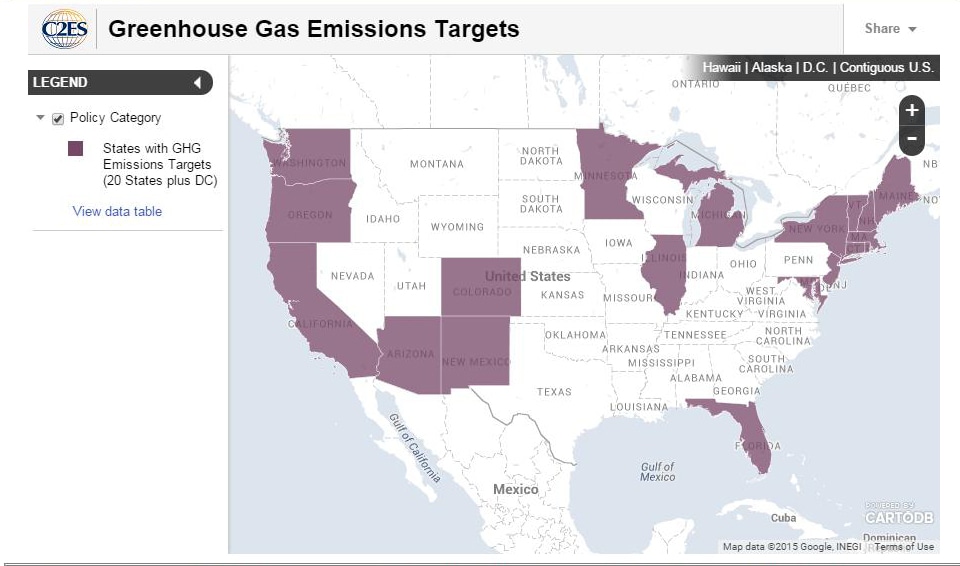- October 15, 2015
- 0 Comments
- In High-Performance Construction
- By Heather Breslin
This October, Governor Cuomo announced with former Vice President Gore that New York will join the Under 2 MOU effort to join states and cities around the world in pledging to reduce GHG emissions 80% by 2050. The Under 2 MOU is a global joint effort to encourage action at the Conference of the Parties meeting at the 21st UN Conference on Climate Change in Paris later this year.
This is not the first commitment that impacts performance targets for buildings in New York. Both the city and state have committed to deep reductions in emissions that have regulatory and programmatic impacts on buildings.
What Targets are in Place?
The Under 2 MOU program is already in line with New York’s same self imposed target in place: 80 by 50 via Executive Order No. 24 which was signed in 2009. New York is one of 20 states, plus DC, with a target in place.
New York City has a comparable target. In September 2014 the One City Built to Last plan also targeted an 80% reduction by 2050. But to reach this target, the city needs to reduce 30% of GHG from the building stock by 2025.
How Does New York Reach These Goals?
Achieving these goals will be done through a range of efforts related to land use, energy generation, and energy efficiency.
New York State’s efforts are focused on the 2015 New York State Energy Plan that targets GHG reductions, a 50% statewide goal for renewable generation, and a 23% reduction from 2012 levels for building energy consumption.
Also this October, Governor Cuomo announced a clean energy competition for student-led coalitions for the state’s colleges and universities. Groups will submit ideas to “aggressively reduce GHG emissions on campuses and beyond – three winners will receive a $1,000,000 award each. This all falls under the REV Campus Challenge that promotes colleges and universities that institute clean energy projects on their campuses and in their communities.
New York City’s strategy understandably has a particular emphasis on building energy usage, as private and public buildings generate nearly 75% of the city’s GHG emissions.
The New York City Carbon Challenge enlists private sector building owners and managers to voluntarily reduce their emissions by 30% in 10 years. Some of the largest owners, managers, and institutions have signed up.
Most recently, the one of its kind NYC Retrofit Accelerator is a free program to provide technical assistance and advisory services for buildings in the city. The ambitious program aims to engage up to 1,000 properties per year by 2025.
The city also continues to phase out dirty No. 6 and No. 4 fuel oils to reduce air pollution and emissions through the NYC Clean Heat program.
SWA has worked with dozens of owners and institutions and hundreds of buildings to reduce energy usage and switch to cleaner fuels. SWA has also worked with the NYC mayor’s office, NYSERDA, Urban Green Council, 32BJ, the United States Department of Energy, and Deutsche Bank, using a combination of field experience and data analysis to promote best practices and inform policy. This, along with the real world work of improving buildings one by one, is crucial to achieve these difficult but important goals.

